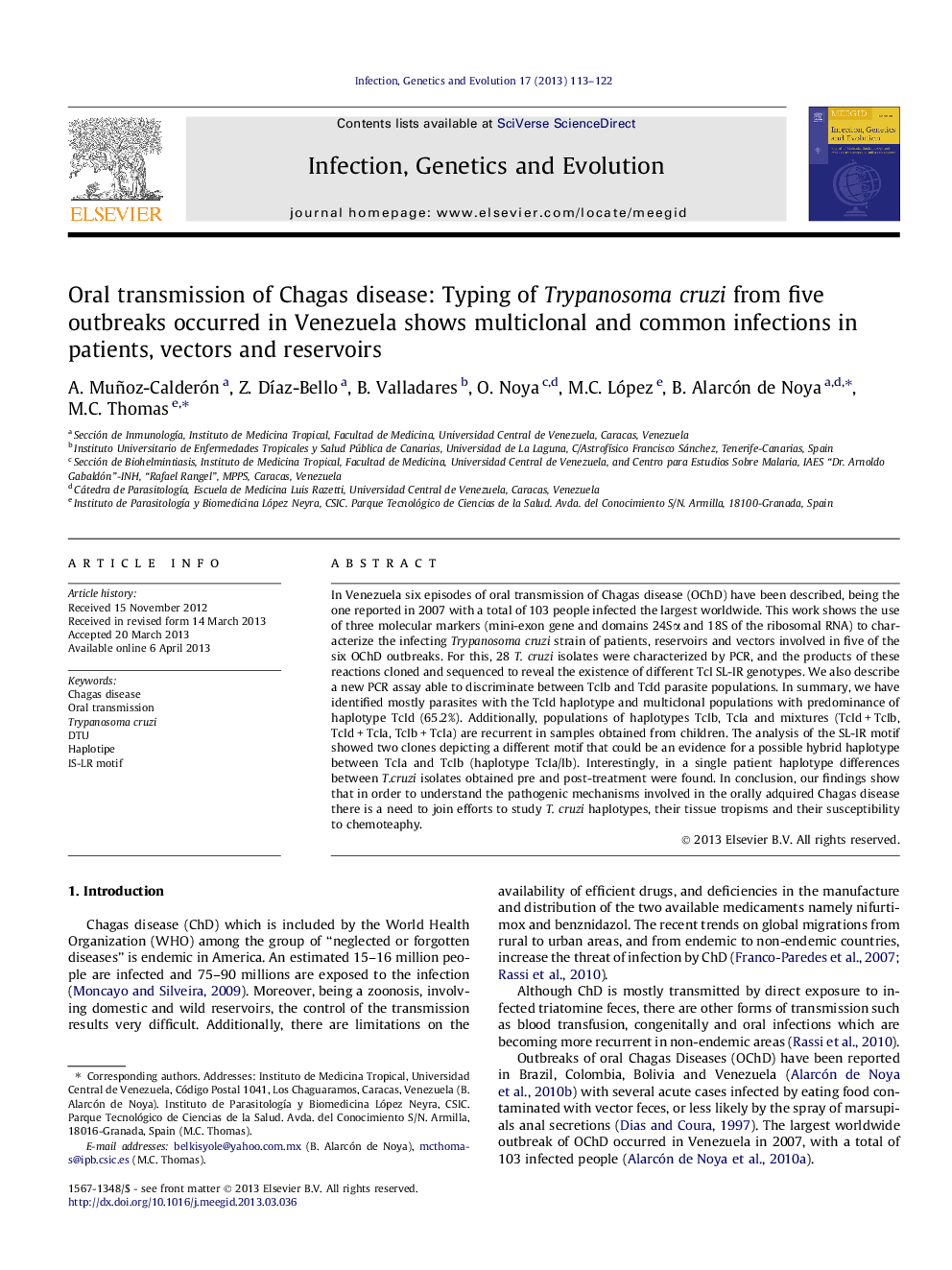| Article ID | Journal | Published Year | Pages | File Type |
|---|---|---|---|---|
| 5910378 | Infection, Genetics and Evolution | 2013 | 10 Pages |
â¢28 isolates of Trypanosoma cruzi from five outbreaks of orally Chagas disease occurred in Venezuela were evaluated.â¢Parasite populations with the haplotype TcId and multiclonal populations were identified.â¢Analysis of the SL-IR motif showed two clones with a different sequence that is possibly evidence of a hybrid haplotype.â¢Different haplotypes among pre and post-treatment isolates from a single patient have been found.
In Venezuela six episodes of oral transmission of Chagas disease (OChD) have been described, being the one reported in 2007 with a total of 103 people infected the largest worldwide. This work shows the use of three molecular markers (mini-exon gene and domains 24Sα and 18S of the ribosomal RNA) to characterize the infecting Trypanosoma cruzi strain of patients, reservoirs and vectors involved in five of the six OChD outbreaks. For this, 28 T. cruzi isolates were characterized by PCR, and the products of these reactions cloned and sequenced to reveal the existence of different TcI SL-IR genotypes. We also describe a new PCR assay able to discriminate between TcIb and TcId parasite populations. In summary, we have identified mostly parasites with the TcId haplotype and multiclonal populations with predominance of haplotype TcId (65.2%). Additionally, populations of haplotypes TcIb, TcIa and mixtures (TcId + TcIb, TcId + TcIa, TcIb + TcIa) are recurrent in samples obtained from children. The analysis of the SL-IR motif showed two clones depicting a different motif that could be an evidence for a possible hybrid haplotype between TcIa and TcIb (haplotype TcIa/Ib). Interestingly, in a single patient haplotype differences between T.cruzi isolates obtained pre and post-treatment were found. In conclusion, our findings show that in order to understand the pathogenic mechanisms involved in the orally adquired Chagas disease there is a need to join efforts to study T. cruzi haplotypes, their tissue tropisms and their susceptibility to chemoteaphy.
Graphical abstractDownload full-size image
